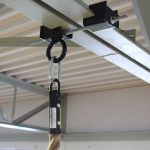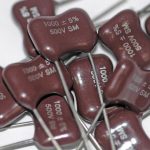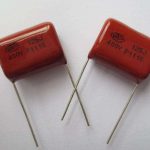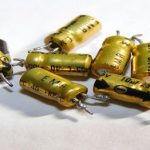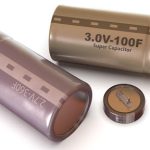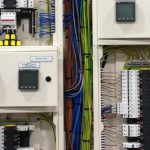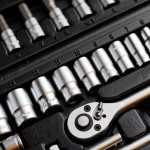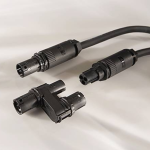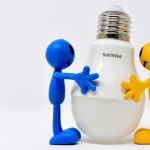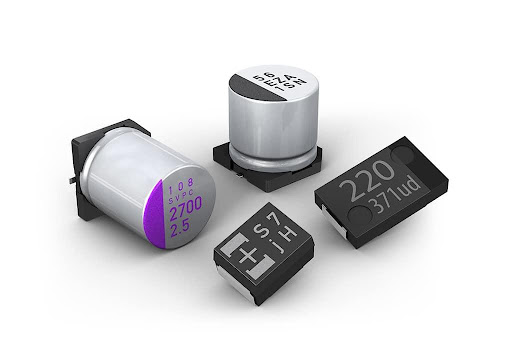
Polymer capacitors used conductive polymer as the electrolytic material. They used solid polymer electrolytes instead of liquid ones usually present in ordinary electrolytic capacitor. The benefit of using solid electrolytes is that it avoids electrolyte drying in the capacitors, which is one of the main reasons that reduce the lifetime of the standard electrolytic capacitors because they use liquid polymers. There are many polymer capacitors, like aluminum polymer capacitors, polymerized organic semiconductors, and conductive polymer capacitors.
Why are Polymer Capacitors Needed?
Polymer capacitors use a solid polymer as their electrolyte and therefore have several benefits compared to the electrolytic capacitor using liquid polymers.
In many situations, Polymer Capacitors can be directly in place of electrolytic capacitors till the maximum voltage rating is not exceeded. The maximum rated voltage of solid polymer capacitors is comparatively lower than the traditional electrolytic capacitor, usually up to 35 volts. However, some capacitors manufactured with an operating temperature of up to 100 volts DC.
Polymer capacitors have various characteristics better than ordinary electrolyte capacitors: longer lifetime, maximum working temperature, better strength, lower equivalent series resistance (ESR), and more secure failure mode. These characteristics include significant downfalls of lower maximum voltage rating, a smaller capacitance range, and a more significant expense contrasted with wet electrolyte capacitors. This kind of capacitor isn’t simply new: creation began during the 1980s. From that point forward, it has been utilized in numerous applications, including server motherboards and PC graphic accelerator cards.
Characteristics of Polymer Capacitors
Equivalent Series Resistance
Polymer capacitors have a higher equivalent series resistance than the standard electrolytic capacitors. Because of this, the polymer capacitors can withstand higher ripple currents during standard working procedures. A ripple current is a component of alternating current that results in energy dissipation through the capacitor’s internal resistance. Which heats the capacitor. The ESR of the polymer capacitor remains stable and constant, whereas the ESR of a standard electrolytic capacitor goes through some changes over time.
Reliability and Failure Modes
The significant advantage of these Capacitors over electrolytic capacitors is using solid electrolytes or solid polymers. When a wet electrolytic capacitor heats up, it evaporates and leads to drying of the electrolyte. This can cause the capacitors even to burst and cause severe damage. Solid polymer capacitor do not have this risk and have a much safer failure mode. In solid capacitors, when failure is probable, they either short circuit or start acting like an open circuit. Therefore, solid polymer capacitor are much more reliable than liquid polymer capacitor or standard electrolytic capacitor.
Lifespan
Other than more excellent reliability and safer operating and failure modes, these capacitor have a longer lifespan because the solid polymer used in their construction which does not dry out. This type of capacitor can function for more extended periods at higher temperatures than electrolytic capacitors.
Some other Properties
Polymer capacitor are manufactured with a capacitance range of 10µF and 1mF. As mentioned before, the standard voltage rating for these capacitors is 35 volts, but capacitors are manufactured with a voltage rating of up to 100 volts DC.
Construction of Polymer Capacitors
Polymer capacitor made by sandwiching a separator sheet containing the electrolyte between two aluminum or tantalum foils. The assembly then moved to accomplish a round and hollow shape. Cathodes are added, and the complete assembly is encased in aluminum packaging. Since strong polymer capacitor are not viewed as parts that will probably be replaced in a gadget, they are frequently made in SMT (Surface-Mount Technology). This permits them to occupy less room on the PCB (Printed Circuit Board) to the detriment of being harder to unsolder, assuming that replacements are crucial.
The standard electrolytic capacitors have vented casings or casings that feature a pre-saved surface that will break in overpressure situations and then release the gasses that are safely formed inside the cases to prevent explosion in case of overheating. For Polymer Capacitors, no such vents are needed as there is a reduced risk of pressure buildup in failure situations.
Applications
- Solid polymer capacitor used for applications requiring large ripple currents.
- These capacitors effectively utilized to smoothen the voltage from a power source to a sensitive one. Which decreases the power noise.
- They effectively utilized for signal decoupling. Power bypass to reduce the signal and power noise generated by the device.
- These capacitors also found on computer motherboards, especially those with higher quality, like server motherboards.. Where they used in place of wet polymer capacitors.







